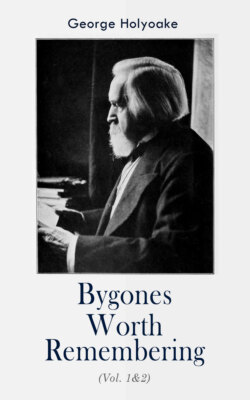Читать книгу Bygones Worth Remembering (Vol. 1&2) - George Jacob Holyoake - Страница 20
На сайте Литреса книга снята с продажи.
IV.
ОглавлениеThe last case in which I supply documentary evidence is that concerning the limelight placed on the Clock Tower at Westminster. No member of Parliament had thought of it, nor should I, had I not needed it for my own convenience. I was then secretary to Mr. (afterwards Sir) Joseph Cowen. When he wished to take part in a division he would ask me to ascertain whether the House was sitting. In those days there were two lamp-posts in Palace Yard with three lights each, which were kept in while the "House was sitting," but when the "House was up" two of the lights were extinguished. There was no other sign, and I had often to ride from Redcliffe Square, Brompton, to Palace Yard before the signal-light could be seen. The limelight had just been perfected, and it occurred to me that if an effective light was placed on the Clock Tower it would be conspicuous for miles around, and members of Parliament, dining in the suburbs, could learn by that sign when the House was sitting and its absence would indicate that the House was up. I wrote to Lord John Manners, giving reasons of Parliamentary convenience for the institution of such a light Lord John was then First Commissioner of Works. The following is a copy of the letter directed to be sent to me:—
"Office of Works, 12, Whitehall Place, S.W." It is requested that any answer to this letter may be directed to The Private Secretary to the First Commissioner of H.M. Works.
"8—1—68.
"Sir—I am desired by Lord John Manners to acknowledge with thanks the receipt of your letter, and suggestions.
"Your faithful servant,
"H. Stuart Wortlev.
"G. J. Holyoake, Esq."
Nothing was done during Lord John Manners' reign as Commissioner of Works, but when Mr. A. S. Ayrton became Commissioner of the Board, he found the letter in the archives of the office, and had the light erected.
